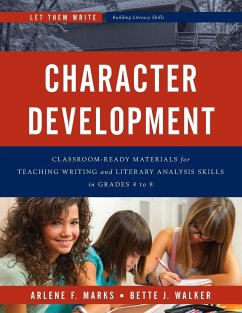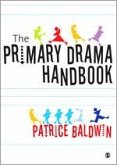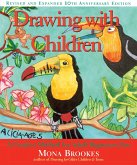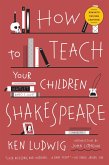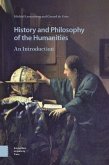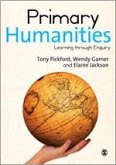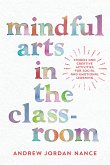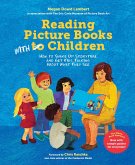Arlene F. Marks, Bette Walker
Character Development
Classroom Ready Materials for Teaching Writing and Literary Analysis Skills in Grades 4 to 8
Arlene F. Marks, Bette Walker
Character Development
Classroom Ready Materials for Teaching Writing and Literary Analysis Skills in Grades 4 to 8
- Broschiertes Buch
- Merkliste
- Auf die Merkliste
- Bewerten Bewerten
- Teilen
- Produkt teilen
- Produkterinnerung
- Produkterinnerung
Character Development focuses on the creation of fully-realized, multidimensional protagonists and antagonists. Students practice first-drafting, editing, polishing, and sharing original paragraphs, scenes, and stories featuring the characters they have brought to life.
Andere Kunden interessierten sich auch für
![The Primary Drama Handbook The Primary Drama Handbook]() Patrice BaldwinThe Primary Drama Handbook48,99 €
Patrice BaldwinThe Primary Drama Handbook48,99 €![Drawing with Children Drawing with Children]() Mona BrookesDrawing with Children17,99 €
Mona BrookesDrawing with Children17,99 €![How to Teach Your Children Shakespeare How to Teach Your Children Shakespeare]() Ken LudwigHow to Teach Your Children Shakespeare22,99 €
Ken LudwigHow to Teach Your Children Shakespeare22,99 €![History and Philosophy of the Humanities History and Philosophy of the Humanities]() Michiel LeezenbergHistory and Philosophy of the Humanities60,99 €
Michiel LeezenbergHistory and Philosophy of the Humanities60,99 €![Primary Humanities Primary Humanities]() Tony PickfordPrimary Humanities45,99 €
Tony PickfordPrimary Humanities45,99 €![Mindful Arts in the Classroom Mindful Arts in the Classroom]() Andrew NanceMindful Arts in the Classroom24,99 €
Andrew NanceMindful Arts in the Classroom24,99 €![Reading Picture Books with Children Reading Picture Books with Children]() Megan Dowd LambertReading Picture Books with Children23,99 €
Megan Dowd LambertReading Picture Books with Children23,99 €-
-
-
Character Development focuses on the creation of fully-realized, multidimensional protagonists and antagonists. Students practice first-drafting, editing, polishing, and sharing original paragraphs, scenes, and stories featuring the characters they have brought to life.
Produktdetails
- Produktdetails
- Let Them Write: Building Literacy Skills
- Verlag: Rowman & Littlefield
- Seitenzahl: 154
- Erscheinungstermin: 1. September 2015
- Englisch
- Abmessung: 280mm x 216mm x 9mm
- Gewicht: 412g
- ISBN-13: 9781475818406
- ISBN-10: 1475818408
- Artikelnr.: 42606974
- Herstellerkennzeichnung
- Libri GmbH
- Europaallee 1
- 36244 Bad Hersfeld
- gpsr@libri.de
- Let Them Write: Building Literacy Skills
- Verlag: Rowman & Littlefield
- Seitenzahl: 154
- Erscheinungstermin: 1. September 2015
- Englisch
- Abmessung: 280mm x 216mm x 9mm
- Gewicht: 412g
- ISBN-13: 9781475818406
- ISBN-10: 1475818408
- Artikelnr.: 42606974
- Herstellerkennzeichnung
- Libri GmbH
- Europaallee 1
- 36244 Bad Hersfeld
- gpsr@libri.de
Born and raised in Toronto, Arlene F. Marks found her storytelling muse at the age of 6, and she has been writing and sharing her imaginative tales ever since. She is also a retired educator and veteran teacher of the craft, having authored two literacy programs for the classroom, as well as From First Word to Last: The Craft of Writing Popular Fiction. During her life, she has worked as everything from a travel agent to a fashion consultant. However, her first love and current obsession is writing speculative fiction.Arlene lives with her husband on the shore of beautiful Nottawasaga Bay. She spends an inordinate amount of time following her characters around the universes in her mind, but she can be lured away from them by dark chocolate... and interesting owls to add to her collection. www.thewritersnest.ca
INTRODUCTION TO LET THEM WRITE
Messages from the authors
How to implement this program
The aims and objectives of this program
How to implement Let Them Read
Writing a literary essay
The aims and objectives of Let Them Read
Setting up a writer-friendly classroom
Authors need a writing plan
Publishing students' work
NCCS Anchors addressed
SECTION 1: CREATING CHARACTERS
SKILL 1: INTRODUCING A CHARACTER
As young authors practice describing characters to create a specific first
impression for the reader, they will become more observant about the people
around them.
SKILL 2: POSITIVE CHARACTER DESCRIPTIONS
Student authors will learn about and practice creating an appealing
character through the purposeful selection of descriptive detail. In the
process, they will gain a better understanding of their own reasons for
reacting positively to other people.
SKILL 3: NEGATIVE CHARACTER DESCRIPTIONS
Student authors will learn about and practice selecting character details
that will make an immediate negative impression on the reader. In the
process, they may come to realize the importance of first impressions in
real life.
SKILL 4: CREATING GOOD GUYS AND BAD GUYS Using Personality Traits
Student authors practice ways to make the hero(ine) a more sympathetic
(likable) character than the villain(ess) of a story, in the process
gaining a deeper understanding of human behavior.
SKILL 5: WRITING FROM A POINT OF VIEW
As students practice adopting a character's point of view, they will come
to understand that there are different sides to every story, in real life
as well as in fiction.
Reproducibles/Media: CCR 1--EVEN MICE HAVE DIFFERENT POINTS OF VIEW
chartCCR 1A--TRY YOUR OWN FABLE chart
CCR 2-DIFFERENT POINTS OF VIEW chart
SKILL 6: WRITING FROM AN UNUSUAL POINT OF VIEW
Student authors practice personifying a variety of inanimate objects and
writing from their point of view. In the process, both students and readers
may gain a new perspective on a part of their life.
SECTION 2: DEEPENING CHARACTERIZATION
SKILL 1: CHARACTERS HAVE EMOTIONS
As students practice choosing verb synonyms, letting a character's actions
reveal his or her emotional state, they will gain a deeper appreciation of
word connotations and an awareness of the word choices they make in
everyday life.
Reproducibles/Media: CCR 3--CHARACTERS HAVE EMOTIONS Chart
SKILL 2: AVOIDING STEREOTYPES
Student authors will learn and practice ways to avoid the use of
story-weakening stereotypical characters. In the process they will become
more aware of the damaging effects of stereotyping in real life.
Reproducibles/Media: CCR 4--STEREOTYPES WITH A TWIST
SKILL 3: BUILDING A CHARACTER'S PHYSICAL DIMENSION
Students will learn how to make a character more realistic for the reader
by describing how the character takes up physical space and has an impact
on his or her surroundings.
SKILL 4: SHOWING HOW CHARACTERS ARE AFFECTED BY THE SETTING
Student authors will learn and practice how to enhance the realism of a
story by describing their characters' reactions to elements of the setting.
In the process, students may become more aware of the reactions of others
to real-life settings.
Reproducibles/Media: CCR 5-CHARACTER AFFECTED BY SETTING
SKILL 5: BUILDING A CHARACTER'S EMOTIONAL DIMENSION
As they practice showing the reader that a character has human feelings,
students may increase their ability to 'read' the emotions being expressed
by others in real life.
Reproducibles/Media: CCR 6--EMOTIONAL DIMENSION BUILDS A CHARACTER Chart
CCR 7-EMOTIONAL DIMENSION Chart
SKILL 6: REVEALING A CHARACTER'S PSYCHOLOGICAL DIMENSION
Students will practice writing a character's thought-revealing dialogue and
internal monologue in order to enhance the realism of the character. In the
process, students may become more skilled at expressing their own thoughts
and feelings.
Reproducibles/Media: CCR 8--WHAT RUNS THROUGH YOUR MIND?
CCR 9-PSYCHOLOGICAL DIMENSION Chart
SECTION 3: CHARACTERS AND DIALOGUE
SKILL 1: USING DIALOGUE TO REVEAL CHARACTER INFORMATION
As student authors practice writing revealing dialogue for created
characters, they may become more aware of the ways in which people reveal
themselves to others in everyday life.
Reproducibles/Media: CCR 10--WHAT'S MY LINE?
SKILL 2: USING DIALOGUE TO REVEAL A CHARACTER'S REACTION TO A SETTING
Students will practice writing dialogue, in the process becoming aware of
its usefulness as a tool to enhance the realism of a story setting.
SKILL 3: USING DIALOGUE TO REVEAL A CHARACTER'S BACKGROUND
Students will practice writing dialogue, in the process becoming aware of
its usefulness as a tool to reveal such things as place of origin, level of
education, and so on about the character speaking.
Reproducibles/Media: CCR 11--CHARACTERS BACKGROUND SHEET
SKILL 4: USING DIALOGUE TO REVEAL A CHARACTER'S STORY GOALS
As they practice writing dialogue, student authors will become adept at
using it to reveal their characters' goals to the reader.
Reproducibles/Media: CCR 12--CHARACTERS AND PURPOSES
Messages from the authors
How to implement this program
The aims and objectives of this program
How to implement Let Them Read
Writing a literary essay
The aims and objectives of Let Them Read
Setting up a writer-friendly classroom
Authors need a writing plan
Publishing students' work
NCCS Anchors addressed
SECTION 1: CREATING CHARACTERS
SKILL 1: INTRODUCING A CHARACTER
As young authors practice describing characters to create a specific first
impression for the reader, they will become more observant about the people
around them.
SKILL 2: POSITIVE CHARACTER DESCRIPTIONS
Student authors will learn about and practice creating an appealing
character through the purposeful selection of descriptive detail. In the
process, they will gain a better understanding of their own reasons for
reacting positively to other people.
SKILL 3: NEGATIVE CHARACTER DESCRIPTIONS
Student authors will learn about and practice selecting character details
that will make an immediate negative impression on the reader. In the
process, they may come to realize the importance of first impressions in
real life.
SKILL 4: CREATING GOOD GUYS AND BAD GUYS Using Personality Traits
Student authors practice ways to make the hero(ine) a more sympathetic
(likable) character than the villain(ess) of a story, in the process
gaining a deeper understanding of human behavior.
SKILL 5: WRITING FROM A POINT OF VIEW
As students practice adopting a character's point of view, they will come
to understand that there are different sides to every story, in real life
as well as in fiction.
Reproducibles/Media: CCR 1--EVEN MICE HAVE DIFFERENT POINTS OF VIEW
chartCCR 1A--TRY YOUR OWN FABLE chart
CCR 2-DIFFERENT POINTS OF VIEW chart
SKILL 6: WRITING FROM AN UNUSUAL POINT OF VIEW
Student authors practice personifying a variety of inanimate objects and
writing from their point of view. In the process, both students and readers
may gain a new perspective on a part of their life.
SECTION 2: DEEPENING CHARACTERIZATION
SKILL 1: CHARACTERS HAVE EMOTIONS
As students practice choosing verb synonyms, letting a character's actions
reveal his or her emotional state, they will gain a deeper appreciation of
word connotations and an awareness of the word choices they make in
everyday life.
Reproducibles/Media: CCR 3--CHARACTERS HAVE EMOTIONS Chart
SKILL 2: AVOIDING STEREOTYPES
Student authors will learn and practice ways to avoid the use of
story-weakening stereotypical characters. In the process they will become
more aware of the damaging effects of stereotyping in real life.
Reproducibles/Media: CCR 4--STEREOTYPES WITH A TWIST
SKILL 3: BUILDING A CHARACTER'S PHYSICAL DIMENSION
Students will learn how to make a character more realistic for the reader
by describing how the character takes up physical space and has an impact
on his or her surroundings.
SKILL 4: SHOWING HOW CHARACTERS ARE AFFECTED BY THE SETTING
Student authors will learn and practice how to enhance the realism of a
story by describing their characters' reactions to elements of the setting.
In the process, students may become more aware of the reactions of others
to real-life settings.
Reproducibles/Media: CCR 5-CHARACTER AFFECTED BY SETTING
SKILL 5: BUILDING A CHARACTER'S EMOTIONAL DIMENSION
As they practice showing the reader that a character has human feelings,
students may increase their ability to 'read' the emotions being expressed
by others in real life.
Reproducibles/Media: CCR 6--EMOTIONAL DIMENSION BUILDS A CHARACTER Chart
CCR 7-EMOTIONAL DIMENSION Chart
SKILL 6: REVEALING A CHARACTER'S PSYCHOLOGICAL DIMENSION
Students will practice writing a character's thought-revealing dialogue and
internal monologue in order to enhance the realism of the character. In the
process, students may become more skilled at expressing their own thoughts
and feelings.
Reproducibles/Media: CCR 8--WHAT RUNS THROUGH YOUR MIND?
CCR 9-PSYCHOLOGICAL DIMENSION Chart
SECTION 3: CHARACTERS AND DIALOGUE
SKILL 1: USING DIALOGUE TO REVEAL CHARACTER INFORMATION
As student authors practice writing revealing dialogue for created
characters, they may become more aware of the ways in which people reveal
themselves to others in everyday life.
Reproducibles/Media: CCR 10--WHAT'S MY LINE?
SKILL 2: USING DIALOGUE TO REVEAL A CHARACTER'S REACTION TO A SETTING
Students will practice writing dialogue, in the process becoming aware of
its usefulness as a tool to enhance the realism of a story setting.
SKILL 3: USING DIALOGUE TO REVEAL A CHARACTER'S BACKGROUND
Students will practice writing dialogue, in the process becoming aware of
its usefulness as a tool to reveal such things as place of origin, level of
education, and so on about the character speaking.
Reproducibles/Media: CCR 11--CHARACTERS BACKGROUND SHEET
SKILL 4: USING DIALOGUE TO REVEAL A CHARACTER'S STORY GOALS
As they practice writing dialogue, student authors will become adept at
using it to reveal their characters' goals to the reader.
Reproducibles/Media: CCR 12--CHARACTERS AND PURPOSES
INTRODUCTION TO LET THEM WRITE
Messages from the authors
How to implement this program
The aims and objectives of this program
How to implement Let Them Read
Writing a literary essay
The aims and objectives of Let Them Read
Setting up a writer-friendly classroom
Authors need a writing plan
Publishing students' work
NCCS Anchors addressed
SECTION 1: CREATING CHARACTERS
SKILL 1: INTRODUCING A CHARACTER
As young authors practice describing characters to create a specific first
impression for the reader, they will become more observant about the people
around them.
SKILL 2: POSITIVE CHARACTER DESCRIPTIONS
Student authors will learn about and practice creating an appealing
character through the purposeful selection of descriptive detail. In the
process, they will gain a better understanding of their own reasons for
reacting positively to other people.
SKILL 3: NEGATIVE CHARACTER DESCRIPTIONS
Student authors will learn about and practice selecting character details
that will make an immediate negative impression on the reader. In the
process, they may come to realize the importance of first impressions in
real life.
SKILL 4: CREATING GOOD GUYS AND BAD GUYS Using Personality Traits
Student authors practice ways to make the hero(ine) a more sympathetic
(likable) character than the villain(ess) of a story, in the process
gaining a deeper understanding of human behavior.
SKILL 5: WRITING FROM A POINT OF VIEW
As students practice adopting a character's point of view, they will come
to understand that there are different sides to every story, in real life
as well as in fiction.
Reproducibles/Media: CCR 1--EVEN MICE HAVE DIFFERENT POINTS OF VIEW
chartCCR 1A--TRY YOUR OWN FABLE chart
CCR 2-DIFFERENT POINTS OF VIEW chart
SKILL 6: WRITING FROM AN UNUSUAL POINT OF VIEW
Student authors practice personifying a variety of inanimate objects and
writing from their point of view. In the process, both students and readers
may gain a new perspective on a part of their life.
SECTION 2: DEEPENING CHARACTERIZATION
SKILL 1: CHARACTERS HAVE EMOTIONS
As students practice choosing verb synonyms, letting a character's actions
reveal his or her emotional state, they will gain a deeper appreciation of
word connotations and an awareness of the word choices they make in
everyday life.
Reproducibles/Media: CCR 3--CHARACTERS HAVE EMOTIONS Chart
SKILL 2: AVOIDING STEREOTYPES
Student authors will learn and practice ways to avoid the use of
story-weakening stereotypical characters. In the process they will become
more aware of the damaging effects of stereotyping in real life.
Reproducibles/Media: CCR 4--STEREOTYPES WITH A TWIST
SKILL 3: BUILDING A CHARACTER'S PHYSICAL DIMENSION
Students will learn how to make a character more realistic for the reader
by describing how the character takes up physical space and has an impact
on his or her surroundings.
SKILL 4: SHOWING HOW CHARACTERS ARE AFFECTED BY THE SETTING
Student authors will learn and practice how to enhance the realism of a
story by describing their characters' reactions to elements of the setting.
In the process, students may become more aware of the reactions of others
to real-life settings.
Reproducibles/Media: CCR 5-CHARACTER AFFECTED BY SETTING
SKILL 5: BUILDING A CHARACTER'S EMOTIONAL DIMENSION
As they practice showing the reader that a character has human feelings,
students may increase their ability to 'read' the emotions being expressed
by others in real life.
Reproducibles/Media: CCR 6--EMOTIONAL DIMENSION BUILDS A CHARACTER Chart
CCR 7-EMOTIONAL DIMENSION Chart
SKILL 6: REVEALING A CHARACTER'S PSYCHOLOGICAL DIMENSION
Students will practice writing a character's thought-revealing dialogue and
internal monologue in order to enhance the realism of the character. In the
process, students may become more skilled at expressing their own thoughts
and feelings.
Reproducibles/Media: CCR 8--WHAT RUNS THROUGH YOUR MIND?
CCR 9-PSYCHOLOGICAL DIMENSION Chart
SECTION 3: CHARACTERS AND DIALOGUE
SKILL 1: USING DIALOGUE TO REVEAL CHARACTER INFORMATION
As student authors practice writing revealing dialogue for created
characters, they may become more aware of the ways in which people reveal
themselves to others in everyday life.
Reproducibles/Media: CCR 10--WHAT'S MY LINE?
SKILL 2: USING DIALOGUE TO REVEAL A CHARACTER'S REACTION TO A SETTING
Students will practice writing dialogue, in the process becoming aware of
its usefulness as a tool to enhance the realism of a story setting.
SKILL 3: USING DIALOGUE TO REVEAL A CHARACTER'S BACKGROUND
Students will practice writing dialogue, in the process becoming aware of
its usefulness as a tool to reveal such things as place of origin, level of
education, and so on about the character speaking.
Reproducibles/Media: CCR 11--CHARACTERS BACKGROUND SHEET
SKILL 4: USING DIALOGUE TO REVEAL A CHARACTER'S STORY GOALS
As they practice writing dialogue, student authors will become adept at
using it to reveal their characters' goals to the reader.
Reproducibles/Media: CCR 12--CHARACTERS AND PURPOSES
Messages from the authors
How to implement this program
The aims and objectives of this program
How to implement Let Them Read
Writing a literary essay
The aims and objectives of Let Them Read
Setting up a writer-friendly classroom
Authors need a writing plan
Publishing students' work
NCCS Anchors addressed
SECTION 1: CREATING CHARACTERS
SKILL 1: INTRODUCING A CHARACTER
As young authors practice describing characters to create a specific first
impression for the reader, they will become more observant about the people
around them.
SKILL 2: POSITIVE CHARACTER DESCRIPTIONS
Student authors will learn about and practice creating an appealing
character through the purposeful selection of descriptive detail. In the
process, they will gain a better understanding of their own reasons for
reacting positively to other people.
SKILL 3: NEGATIVE CHARACTER DESCRIPTIONS
Student authors will learn about and practice selecting character details
that will make an immediate negative impression on the reader. In the
process, they may come to realize the importance of first impressions in
real life.
SKILL 4: CREATING GOOD GUYS AND BAD GUYS Using Personality Traits
Student authors practice ways to make the hero(ine) a more sympathetic
(likable) character than the villain(ess) of a story, in the process
gaining a deeper understanding of human behavior.
SKILL 5: WRITING FROM A POINT OF VIEW
As students practice adopting a character's point of view, they will come
to understand that there are different sides to every story, in real life
as well as in fiction.
Reproducibles/Media: CCR 1--EVEN MICE HAVE DIFFERENT POINTS OF VIEW
chartCCR 1A--TRY YOUR OWN FABLE chart
CCR 2-DIFFERENT POINTS OF VIEW chart
SKILL 6: WRITING FROM AN UNUSUAL POINT OF VIEW
Student authors practice personifying a variety of inanimate objects and
writing from their point of view. In the process, both students and readers
may gain a new perspective on a part of their life.
SECTION 2: DEEPENING CHARACTERIZATION
SKILL 1: CHARACTERS HAVE EMOTIONS
As students practice choosing verb synonyms, letting a character's actions
reveal his or her emotional state, they will gain a deeper appreciation of
word connotations and an awareness of the word choices they make in
everyday life.
Reproducibles/Media: CCR 3--CHARACTERS HAVE EMOTIONS Chart
SKILL 2: AVOIDING STEREOTYPES
Student authors will learn and practice ways to avoid the use of
story-weakening stereotypical characters. In the process they will become
more aware of the damaging effects of stereotyping in real life.
Reproducibles/Media: CCR 4--STEREOTYPES WITH A TWIST
SKILL 3: BUILDING A CHARACTER'S PHYSICAL DIMENSION
Students will learn how to make a character more realistic for the reader
by describing how the character takes up physical space and has an impact
on his or her surroundings.
SKILL 4: SHOWING HOW CHARACTERS ARE AFFECTED BY THE SETTING
Student authors will learn and practice how to enhance the realism of a
story by describing their characters' reactions to elements of the setting.
In the process, students may become more aware of the reactions of others
to real-life settings.
Reproducibles/Media: CCR 5-CHARACTER AFFECTED BY SETTING
SKILL 5: BUILDING A CHARACTER'S EMOTIONAL DIMENSION
As they practice showing the reader that a character has human feelings,
students may increase their ability to 'read' the emotions being expressed
by others in real life.
Reproducibles/Media: CCR 6--EMOTIONAL DIMENSION BUILDS A CHARACTER Chart
CCR 7-EMOTIONAL DIMENSION Chart
SKILL 6: REVEALING A CHARACTER'S PSYCHOLOGICAL DIMENSION
Students will practice writing a character's thought-revealing dialogue and
internal monologue in order to enhance the realism of the character. In the
process, students may become more skilled at expressing their own thoughts
and feelings.
Reproducibles/Media: CCR 8--WHAT RUNS THROUGH YOUR MIND?
CCR 9-PSYCHOLOGICAL DIMENSION Chart
SECTION 3: CHARACTERS AND DIALOGUE
SKILL 1: USING DIALOGUE TO REVEAL CHARACTER INFORMATION
As student authors practice writing revealing dialogue for created
characters, they may become more aware of the ways in which people reveal
themselves to others in everyday life.
Reproducibles/Media: CCR 10--WHAT'S MY LINE?
SKILL 2: USING DIALOGUE TO REVEAL A CHARACTER'S REACTION TO A SETTING
Students will practice writing dialogue, in the process becoming aware of
its usefulness as a tool to enhance the realism of a story setting.
SKILL 3: USING DIALOGUE TO REVEAL A CHARACTER'S BACKGROUND
Students will practice writing dialogue, in the process becoming aware of
its usefulness as a tool to reveal such things as place of origin, level of
education, and so on about the character speaking.
Reproducibles/Media: CCR 11--CHARACTERS BACKGROUND SHEET
SKILL 4: USING DIALOGUE TO REVEAL A CHARACTER'S STORY GOALS
As they practice writing dialogue, student authors will become adept at
using it to reveal their characters' goals to the reader.
Reproducibles/Media: CCR 12--CHARACTERS AND PURPOSES

